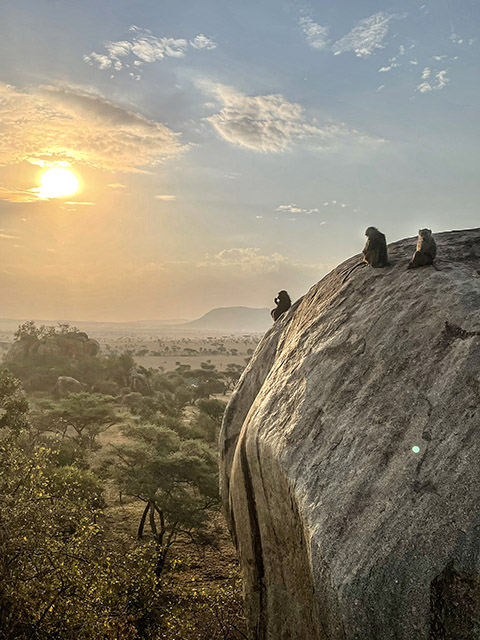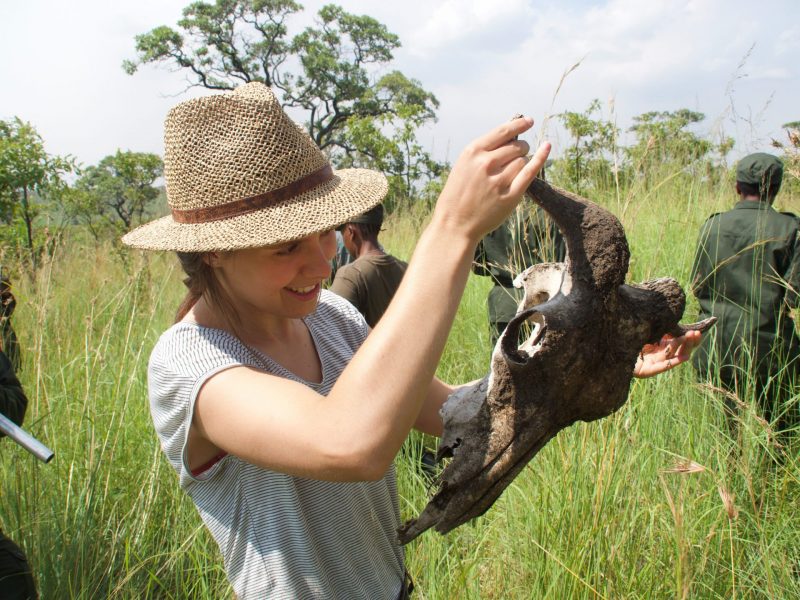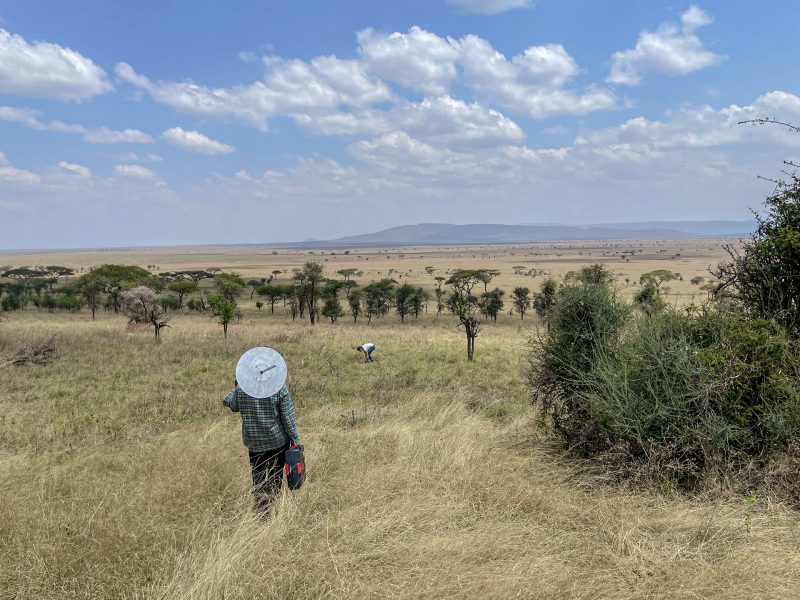
Doing research with lions nearby
Never run
‘Our professor asked us to take with us all sorts of apparatus in our luggage, laser scanners, hand trowels. The guys at customs didn’t quite know what to make of us’, says Vera, laughing.
Vera Thijssen and Sofie Hovius, two master students of ecology and conservation, were part of a research project led by ecology professor Han Olff, investigating the impact of human wildlife interaction in protected conservation areas.
One of the UG’s first field expeditions since the Covid-19 pandemic halted them, it went ahead even as funding from the EU becomes increasingly precarious. The UG now fronts most of the fixed costs of the research itself.
Height
Part of a long-term research project in the Serengeti, the data that the students collected will be used to calibrate layers for mapping software that, via radar satellites, can better assess the height of the National Park’s vegetation. This provides researchers with a more detailed picture of where and when vegetation is changing shape.
We had bucket showers and only three hours of electricity each evening
The newly collected data will give better context to existing photographs of the Serengeti from above. ‘Until now, we have only had high-resolution photos that only show single patches of green. This is useful for knowing where things are, but the height data from transects will help to better show the structure of the environment’, explains Olff.
Having returned only recently, the pair had to get used to a life with warm water and consistent electricity after three months without.

Bucket showers
‘We really were in the bush’ says Vera. Based in Seronera in Northern Tanzania, the students certainly were not on safari. ‘The shared house managed by TAWIRI (Tanzania Wildlife Research Institute) only had basic amenities; bucket showers and only three hours of electricity each evening.’
With most of the day spent journeying in between sites across the 14,700 square kilometer Serengeti – roughly half the size of the Netherlands – being unwashed didn’t prove the end of the world.
Students conducting transact

Barrenness
‘We had a hundred plots across to conduct transects at. This involves surveying the dominant grass, tree and shrub species each five meters for a hundred metres and measuring barrenness, soil moisture and the height of shrubs’, explains Vera.
Vera took ages to answer the door. I thought she had been eaten
‘The scale of the conservation challenges in East Africa is large. Imagine the discussion about red deer and wolves in the Netherlands multiplied twentyfold’, says Olff. The rapid development of the East African hinterland into farmland sees ‘an encroachment of human activities right up to the margins of the protected area’.
Living alongside the park’s wildlife presented its own challenges, says Sofie. ‘We had a pretty strict “don’t go outside after dark” policy. That’s when the savannah’s predators come out to hunt.’ Lions don’t always abide by the rules, however.
Lions
‘One afternoon, I was coming back from the main house and I saw this head perhaps fifty meters away from me. I remembered the first rule they had told us when we arrived was “never run”, so I sort of did this big loop around what really was a lioness. Then, I got to the house and Vera took ages to answer the door. I thought she had been eaten.’
Lions aside, Olff is proud of the work his students undertook. ‘This is important research, particularly given the challenges of climate change and the demographic shifts occurring in East Africa’, he says. The research has also acted as somewhat of an olive branch, says Olff; Kenyan and Tanzanian tourism ministers are using the precarious position of the Serengeti as a reason to collaborate on cross-border tourism projects.

Photos by Vera Thijssen